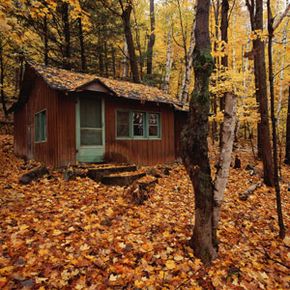Imagine living in a 10 foot by 7 foot (approximately 3 meter by 2 meter) home for more than five years, by choice. That's just what Gregory Paul Johnson of Iowa City, Iowa, has done. The national 2007 average was 2,521 square feet (234.21 square meters), more than 2,400 square feet (222.97 square meters) more than Johnson's home [source: U.S. Census Bureau]. While the thought of willingly and happily giving up extra square footage might be inconceivable to many Americans, there's a new movement of people like Johnson that are choosing small spaces over larger dwellings.
The small house movement is a grassroots effort of people living more simply and using less space. While tiny houses of under 100 square feet (9.29 square meters) are certainly a part of the movement, the principles don't only revolve around house size. "It's more just about the attitude of living life simply and as small as is comfortable for each person," says Johnson. "That is certainly not a cookie-cutter approach; each person can have different needs."
Advertisement
Fitting into the small house movement is very much an interpretation of each person's definition of living more efficiently. "I never really make a definitive definition of what is small and what constitutes a small house," says Jay Shafer, founder/designer of the Tumbleweed Tiny House Company and resident of an 89-square-foot (8.27-square-meter) home. "A 4,000-square-foot (371.61 square meters) house could be a small house, if the space is being used well."
Starting with just a few individuals, the movement has seen an increased popularity within the last five to seven years. Johnson has noticed this interest through an increase in the traffic on the Web site for the Small House Society, an organization started in 2002 to support the movement [source: Resources for Life]. From around 50 visitors five years ago, the Web site now easily gets 1,200 to 1,500 visitors a day [source:Johnson].
People have been drawn to the movement for a number of reasons, including economic and environmental. "Thanks to the confluence of an economic downtown, a housing crisis and global warming, more attention is now being paid to how much space we really need," says Shafer.
In this article, we'll explore the characteristics of a small house, the costs involved and the people that are choosing to live more simply.
Advertisement
